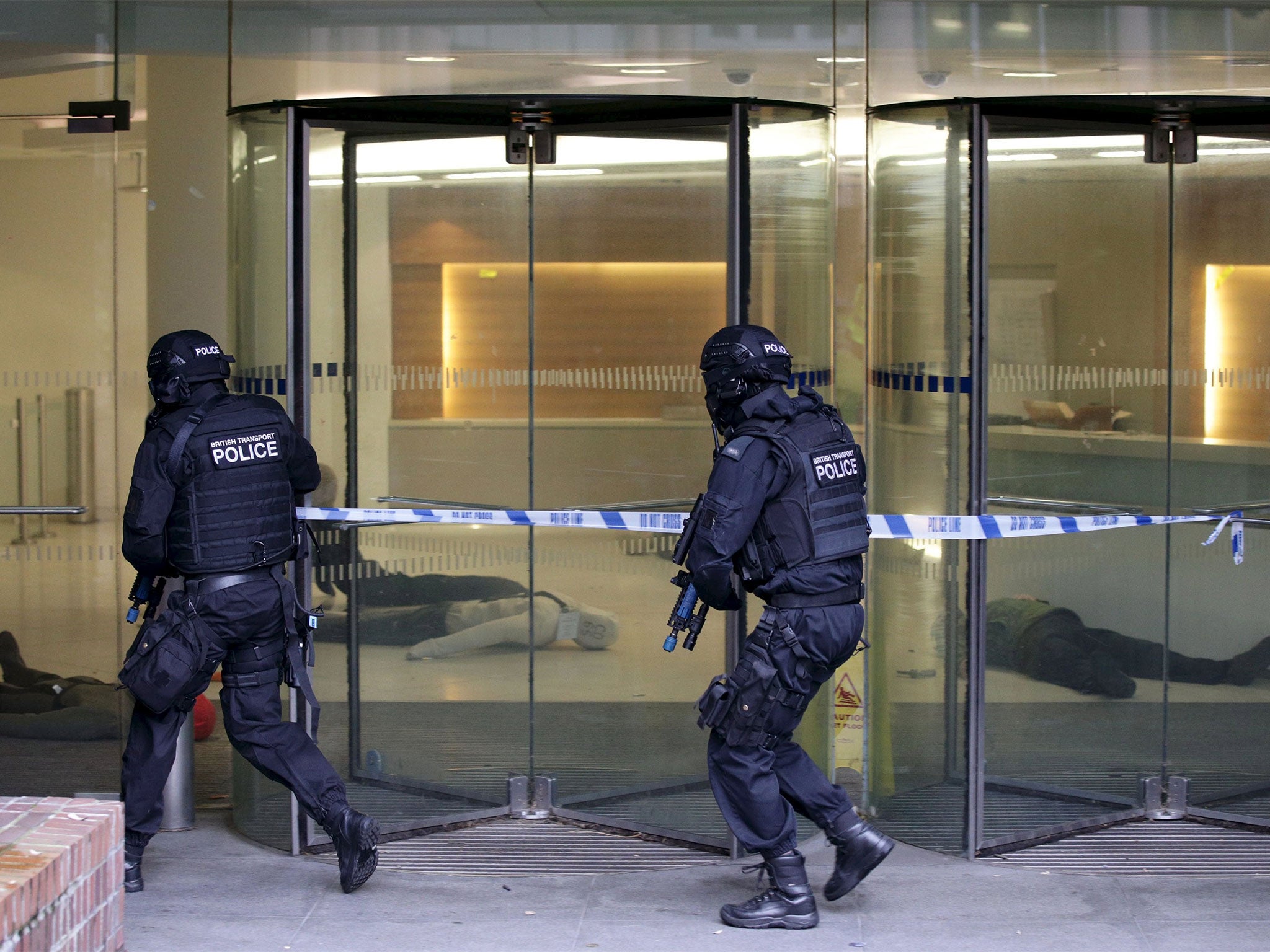London terror drill: Police told to ignore the injured and 'go forward' as shopping centre siege is recreated in capital
Following the Paris attacks, police are being trained to confront mass gunmen in a shopping centre style situation

Police marksmen are being trained to ignore stricken victims and injured colleagues to counter the tactics of marauding bands of terrorists seen during the Paris attacks, Scotland Yard said yesterday.
The “go forward” policy means that armed officers will not stop to administer first aid to the injured while in pursuit of gunmen during major acts of terrorism. The policy was drawn up after the 2008 Mumbai atrocity and refined in the light of new attacks but has not before been publicised by the force.
It means that ambulance crews will not be able to treat the wounded until areas are clear of a terrorist threat. “It’s challenging for our officers because in asking them to go forward we are asking them not to give first aid to people who are injured. And it might well be their colleagues as well,” said Scotland Yard assistant commissioner Patricia Gallan.
“The most important thing is to get to that threat and stop it, to keep going forward and not to tend to injuries. It is a tragic set of circumstances if it happens. But as quickly as possible we will get the ambulance service in.”

Evidence of the tactics emerged during a training exercise for the first wave of armed police to arrive at the scene of any attack in the capital. Footage of the exercise – based on an attack by four terrorists - showed officers moving into the building’s lobby dotted with dummies of the injured and dead, before moving swiftly through the building.
“The decision has to be made, and it is a brave decision, about whether you stand back - in which case you may have more people die - or whether the best thing is to go forward,” said AC Gallan. “We have been training our officers to go forward.”
The rapid reaction response contrasts with hostage situations that were typical of pre-September 11, 2001 attacks - such as the six-day Iranian embassy siege in 1980 - when mass casualties were not necessarily seen as an end in themselves.

The force has a pool of about 2,000 firearms-trained officers and Commissioner Bernard Hogan-Howe has said he wants to increase that number by a third in response to the attacks in Paris.
The changing nature of terrorism has seen the force change its tactics since the attacks on the United States and the potential – since realised – for suicide bomb attacks on the British mainland.
They have included a policy of shooting to the head to stop a suicide bomber from triggering explosives, first revealed in 2005 following the death of the Brazilian electrician Jean Charles de Menezes in the wake of the attacks on the London transport network.
AC Gallan said that this did not amount to a shoot-to-kill policy, but that national policing lead for firearms has accepted that the tactic was “highly likely” to result in the same thing.
Authorised practice published on the website of the College of Policing, the body responsible for standards, said that “a ‘critical shot’ is a shot or shots intended to immediately incapacitate the subject.”
It went on: “A critical shot should only be fired when absolutely necessary in defence of a person when there is an imminent and extreme risk to life from unlawful violence. A critical shot is a shot or shots to the head, if possible, or otherwise to the central nervous system or major organs.”
